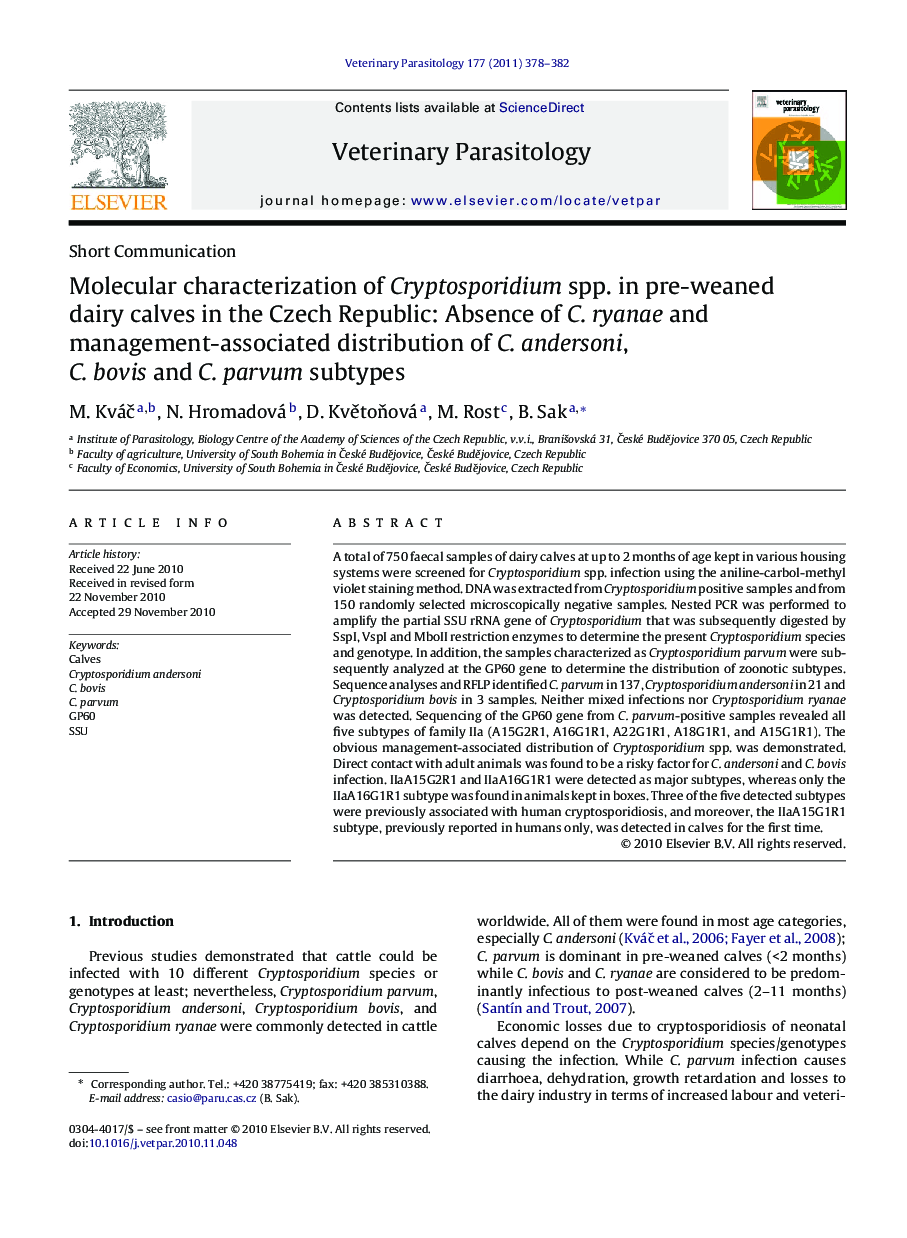| Article ID | Journal | Published Year | Pages | File Type |
|---|---|---|---|---|
| 2470440 | Veterinary Parasitology | 2011 | 5 Pages |
A total of 750 faecal samples of dairy calves at up to 2 months of age kept in various housing systems were screened for Cryptosporidium spp. infection using the aniline-carbol-methyl violet staining method. DNA was extracted from Cryptosporidium positive samples and from 150 randomly selected microscopically negative samples. Nested PCR was performed to amplify the partial SSU rRNA gene of Cryptosporidium that was subsequently digested by SspI, VspI and MboII restriction enzymes to determine the present Cryptosporidium species and genotype. In addition, the samples characterized as Cryptosporidium parvum were subsequently analyzed at the GP60 gene to determine the distribution of zoonotic subtypes. Sequence analyses and RFLP identified C. parvum in 137, Cryptosporidium andersoni in 21 and Cryptosporidium bovis in 3 samples. Neither mixed infections nor Cryptosporidium ryanae was detected. Sequencing of the GP60 gene from C. parvum-positive samples revealed all five subtypes of family IIa (A15G2R1, A16G1R1, A22G1R1, A18G1R1, and A15G1R1). The obvious management-associated distribution of Cryptosporidium spp. was demonstrated. Direct contact with adult animals was found to be a risky factor for C. andersoni and C. bovis infection. IIaA15G2R1 and IIaA16G1R1 were detected as major subtypes, whereas only the IIaA16G1R1 subtype was found in animals kept in boxes. Three of the five detected subtypes were previously associated with human cryptosporidiosis, and moreover, the IIaA15G1R1 subtype, previously reported in humans only, was detected in calves for the first time.
